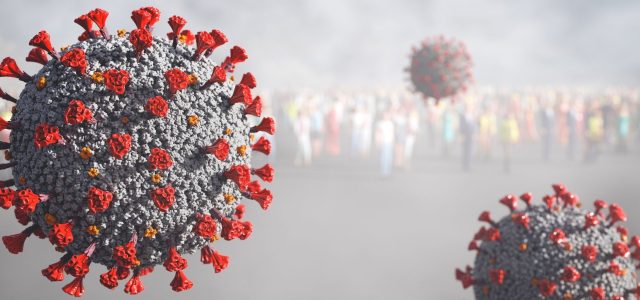
Three years after beating Lyme disease, Jennifer tested positive for COVID-19. Months later, the same crushing fatigue, brain fog, and joint pain that she experienced with Lyme had returned. Was it Long COVID — or Lyme again? Doctors disagreed, and meanwhile she felt worse by the day.
This scenario is increasingly common. Many patients discover that Lyme disease and Long COVID can feel almost identical and that creates confusion for both patients and doctors.
Is it Lyme or Long COVID?
Lyme disease and Long COVID share several overlapping symptoms, making diagnosis and treatment challenging in some cases. These similarities often lead to confusion among patients and healthcare providers, especially when clear diagnostic markers are lacking. Additionally, both illnesses can result in fluctuating symptoms and periods of relapse, further complicating recovery.
Both Lyme disease and Long COVID can leave you with the same frustrating issues:
- Brain fog that won’t lift — Losing words mid-sentence, forgetting why you walked into a room, or struggling with once-automatic tasks.
- Exhaustion that sleep doesn’t fix — Sleeping 10 hours and still waking up drained.
- Your heart acting up — Racing when you stand, skipping beats, or pounding for no reason.
- Pain that travels — Aching joints and muscles that move from one spot to another.
- Crashes after activity — Even a grocery run can leave you wiped out for days.
Why similar symptoms?
Both conditions likely involve dysregulation of the immune system, chronic inflammation, and potential effects on the nervous system. And, even though Lyme disease is caused by a bacterium (Borrelia burgdorferi) and Long COVID is a post-viral syndrome from SARS-CoV-2, the body’s prolonged and sometimes dysfunctional response to these infections creates a similar cluster of symptoms. How does this happen?
- Post-infectious response: Both Lyme and Long COVID can trigger lingering immune responses even after the initial infection has resolved. This can lead to chronic inflammation that affects multiple body systems.
- Immune system dysfunction: In both conditions, the immune system may become overactive or misdirected, attacking healthy tissues or failing to return to a normal state. This can cause symptoms like fatigue, joint pain, and brain fog.
- Neurological involvement: Lyme disease (especially in its later stages) and Long COVID can both affect the brain and nervous system. This can lead to cognitive problems, sleep issues, mood changes, and nerve pain.
- Mitochondrial dysfunction: Some research suggests that both conditions may impair how the body produces and uses energy at the cellular level, contributing to fatigue and exercise intolerance.
- Autonomic nervous system disruption: Both diseases have been linked to dysautonomia—a disorder of the autonomic nervous system—which can cause symptoms like heart rate irregularities, dizziness, and temperature sensitivity.
The key difference: Lyme involves bacteria that can be targeted with antibiotics. Long COVID seems to reflect the immune system stuck in overdrive after the virus is gone.
How Treatments Differ in Lyme vs. Long COVID
Treatment for Long COVID and Lyme disease differs because they stem from different infections and affect the body differently. Lyme is caused by a bacterial infection and is typically treated with antibiotics, along with pain relief, anti-inflammatories, and support for joint or nerve symptoms in chronic cases. Long COVID, triggered by a viral infection (SARS-CoV-2), doesn’t respond to antibiotics. Instead, treatment focuses on managing symptoms through rehabilitation including physical or cognitive therapy, medications for specific issues, and sometimes anti-inflammatory drugs.
Treatment responses may offer clues.
If it’s Lyme disease, you might:
- Improve with antibiotics (if infection is still active)
- Respond to treatment for co-infections like Babesia
- Benefit from anti-inflammatory strategies
- Need support for immune and detox pathways
If it’s long COVID, you might:
- Have mixed results with anti-inflammatories
- Need careful pacing of activity to avoid crashes
- Require heart and lung rehab
- Benefit from therapies that calm the nervous system
But here’s the reality: recovery doesn’t always follow the rules, and every patient’s path looks different.
When Patients Face Both Lyme and Long COVID
Some patients who had Lyme disease years earlier developed new symptoms after a COVID infection, while others noticed their old Lyme symptoms returning or worsening. This has led some experts to explore whether COVID may trigger a reactivation of latent infections or intensify underlying immune issues.
This makes care complicated:
- Sorting out which infection is driving symptoms
- Deciding whether to focus on antibiotics, immune-calming treatments, or both
- Setting realistic recovery expectations when multiple systems are affected
Managing Overlapping Symptoms
Instead of getting stuck debating whether it’s Lyme, Long COVID, or both, patients and doctors can focus on shared strategies:
- Calm the overactive immune system
- Support cellular energy to help mitochondria function better
- Address nervous system dysfunction such as POTS or temperature issues
- Reduce brain inflammation to improve focus and clarity
Key Takeaways for Patients
Understanding these overlaps can empower you:
- Your symptoms are real, not imagined.
- Treatment options may expand—what helps one condition might help the other.
- Recovery often takes time, regardless of which infection started it.
- You can advocate better for yourself by recognizing patterns and asking the right questions.
Bottom line:
Sometimes the exact label matters less than finding the treatments that actually make you feel better. What matters most is working with clinicians who understand post-infectious illness and are committed to helping you heal.
Have you faced overlapping Lyme and Long COVID symptoms? Share your story in the comments below. I’d like to hear from you.
Related Articles
- Consequences of Contracting COVID-19 or Taking the COVID-19 Vaccine for Individuals with a History of Lyme Disease
- Long COVID diagnostic with differentiation from chronic lyme disease using machine learning and cytokine hubs
- Is it Long COVID or Lyme disease?
- POTS similarities seen in Long-COVID and Lyme disease



I was previously treated for a co-infection of Babesia Ducani and Bergerdorfer. Unfortunately, I wasn’t treated for over a decade after chasing down symptoms and misdiagnosis. Even though my initial infection included three bullseye rashes, 105 fever for 10 days, I could barely walk, and had insane headaches, and pain. I was told it was just a virus.
I never truly recovered and spent the next 10+ years in poor health and eventually developed Hashimoto’s, then thyroid cancer, my gallbladder shriveled up and I developed Lipodema.
I had a 4 years period where Lyme went into remission and I felt amazing and back to myself. I have never been able to figure out what changed other than the removed my gallbladder. Unfortunately, the symptoms returned during a period of stress.
Now, I have been diagnosed with Long-Covid and the 200 symptoms and conditions that come with including a re-activation of Epstein-Barr. They have run Lyme tests and did a spinal tape amd nothing came back positive, but I fear they still haven’t ordered the proper tests. When I was originally diagnosed it was after an antibiotic challenge test and they found dead spiroquettes in my blood. I want to do that test again but I can’t remember (imagine that) where It was performed. Do you know how I can get that test? Two of my doctors want me to get an IVIG so we are working with insurance to get it. What do you think about that?
I wish the tests were more reliable. For example, only 2 of 27 patients with chronic neurologic Lyme had a positive test by spinal